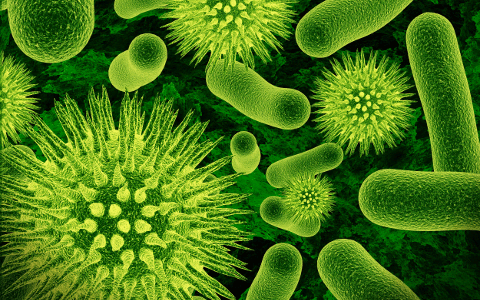Bio-Security™
Minimizing Legionella and Other Pathogens
Microbes found in agricultural, industrial, and food processing water systems can create bio-films, which are potentially damaging to system metal, and reduce energy efficiency. Specific bacteria, for instance, Legionella and E. coli, may be pathogenic and can be transported through water systems. Cooling tower drift, and even the mist from domestic water systems, can be a particular concern in transporting bacteria to humans.

Bio-Security™
How Pathogens Appear in Water Systems
Microbes, including pathogenic organisms, are often present in source-water. The diseases that can spread from waterborne pathogens include Legionellosis, and Cholera. Since we rely on safe water systems for anything from agriculture to industrial processes, it’s a must to implement an effective water management plan to control the spread of disease.
Bio-Security™
Managing Your Water System
The American Society of Heating, Refrigeration, and Air-Conditioning Engineers (ASHRAE) has developed a standard protocol for control of legionella in commercial building water systems. The standard, entitled Legionellosis: Risk Management for Building Water Systems, or (ASHRAE 188-2015), was finalized in July, 2015, and has been updated since its original release. This voluntary program will help define the “standard of care” to be used by building owners and managers in assessing the risks associated with waterborne pathogens.

Bio-Security™
Controlling Pathogens in Water Systems
CH2O’s BIO-GUARDTM products are registered with the US Environmental Protection Agency (EPA) and corresponding state agencies. BIO-GUARDTM products are used to help control algae, bacteria, and fungi in recirculating commercial and industrial water-cooling towers when used within EPA registration guidelines (see label).
An initial dose of BIO-GUARDTM products can provide immediate reduction of biological activity. Dosages are repeated until control is achieved. Maintenance dosages are required to help control future microbial growth. Dosage frequency depends on the amount of treated water bleed-off and the severity of the microbiological problem.
Bio-Security™
Developing a Water Management Plan
CH2O suggests that water system owners, or operators, develop a comprehensive water management plan in accordance with ANSI/ASHRAE Standard 188, OSHA guidelines (OSHA Technical Manual Section III:Chapter 7), or other guidelines applicable to the specific facility/system. If you need assistance developing a water management plan for your application, please contact a CH2O representative to discuss it today.


